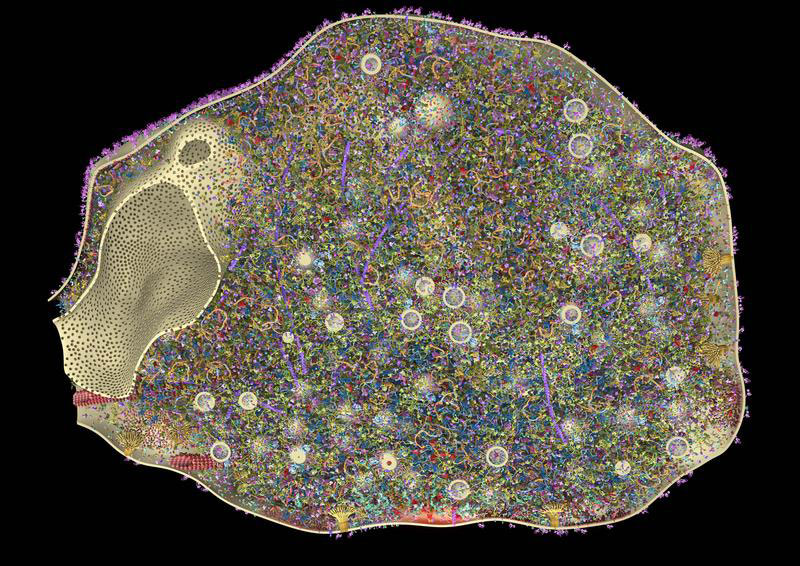Benjamin Wilhelm and colleagues the University of Göttingen Medical Center have developed a detailed 3D model of a synapse. Millions of nerve terminals from rat brains were isolated. A combination of electron microscopy, mass spectrometry, antibody staining, and super-resolution fluorescence microscopy determined the abundance and distribution of 62 proteins crucial for the synaptic vesicle cycle.
“Our model shows that the proteins involved in neurotransmitter release can be enormously abundant, with up to 27,000 copies per synapse,” said Professor Silvio Rizzoli, “whereas proteins involved in recycling are present in only 1,000-4,000 copies.”
The numbers of proteins involved in recycling are much lower than expected. They give the terminal the capacity to recycle 10% of its entire vesicle pool. Recycling takes place slowly, in the seconds following vesicle fusion, therefore does not contribute when multiple vesicles fuse in quick succession. As Rizzoli describes the advantage, “the cell does not need to produce huge numbers of recycling proteins, which saves energy.”
The model also shows that the proteins involved in the same steps of the vesicle cycle are present in roughly equal amounts within the terminal, raising the question of how their synthesis is regulated so that each set of proteins is present at the right concentration.
The researchers hope are to generate a similar model of an entire neuron within the next five years.
